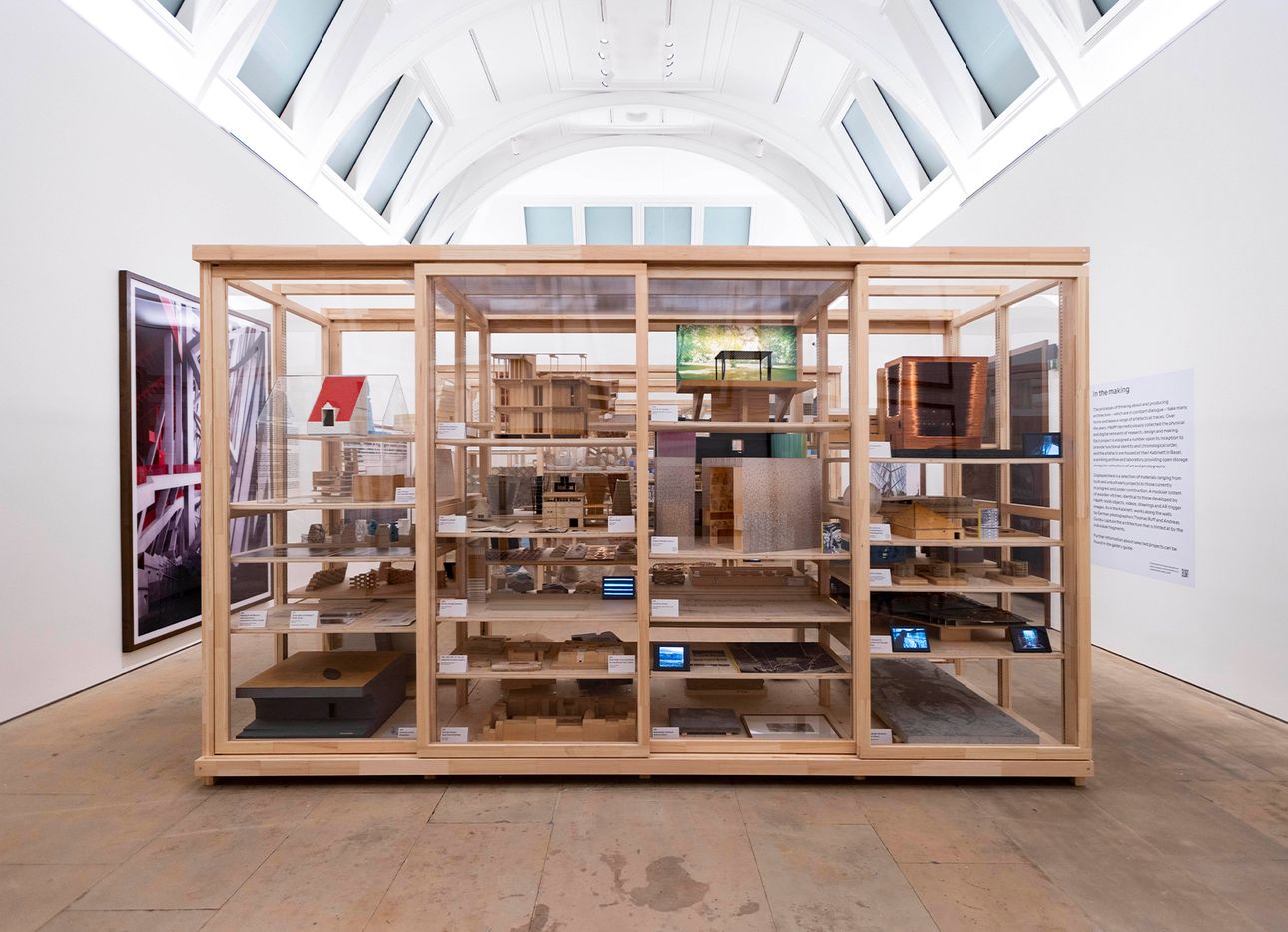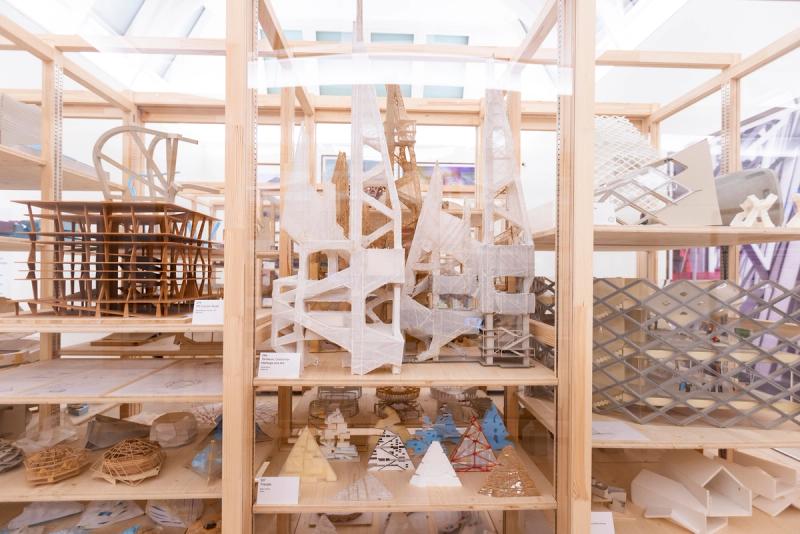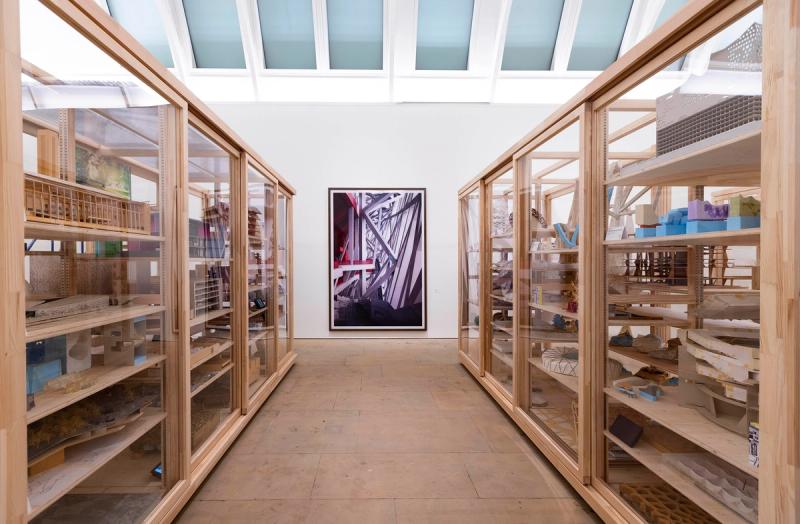
A Herzog & de Meuron Exhibition Emphasizes Architecture as Collective, Not Egocentric
Designing a truly great building is no easy feat. Among many things, it must be cognizant of history, responsive to the present, both inspiring and accessible, a symbol and a mirror. London’s Tate Modern—a former power station transformed into an art gallery in 2000, then extended in 2016 by the Basel, Switzerland–based architecture practice Herzog & de Meuron (H&dM)—achieves this mightily. It is exactly the type of building that feels at once inevitable to its location, sensitive to its surroundings, and instinctive to those who use and visit it.
H&dM has created this effect elsewhere, too, from concert halls (the Elbphilharmonie in Hamburg, 2016) and wineries (the Dominus Estate in Napa, 1998), to skyscrapers (56 Leonard Street in New York City, 2017) and stadiums (Beijing’s “Bird’s Nest,” 2008, in collaboration with the artist Ai Weiwei). Collectively, H&dM’s rich and vast body of work brings purpose, place, and people into sync through architecture. If you’re wondering how the firm, led by founding partners Jacques Herzog and Pierre de Mueron, realizes this, a retrospective at the Royal Academy of Arts in London (on view through October 15) has set out to demystify its design process.
“They seem to be able to anticipate the way that we will occupy buildings in the future,” says Vicky Richardson, the Royal Academy’s head of architecture and its Drue Heinz Curator. “Tate Modern’s Turbine Hall is an example of that: Today we can’t imagine galleries without these huge spaces where people gather together collectively to experience art.”

Less of a historical overview and more of a “live design studio,” the exhibition traces the intense research, multidisciplinary collaboration, and various digital methods from which these buildings have emerged over the past four-plus decades, from H&dM’s founding in Basel in 1978 to its multiple international offices and 600 employees today. The showcase unpacks 80 projects from an astoundingly deep portfolio of more than 600 in 40 countries.
One of the digital tools it explores is augmented reality (AR), used in the design process to understand and communicate space, and now in the exhibition, with an app. The app unlocks a timber cabinet of static architectural models, revealing in AR their skylight geometry, colorful ventilation systems, and bulging façades, which pulsate out of the cabinet and into the walkways of the gallery. What AR shows is that, far from sculpture, these models are full of data. As with the buildings that result, H&dM’s smaller-scale examples perform from the inside out, and are less about overly expressive ego than about pragmatic (and decidedly beautiful) inhabitation.
Large-scale photographic prints by Thomas Ruff and Andreas Gursky capture the urban magnitude and hard physicality of H&dM’s work, while artist duo Beka & Lemoine’s intimate filmic portrait of the life of the REHAB Clinic for Neurorehabilitation and Paraplegiology in Basel, completed 20 years ago and extended in 2020, captures architecture’s soft neuroaesthetic power: how details, edges, and framed views touch people’s lives daily and can even help them to heal.
In the third and largest room, visitors navigate through the many design layers of the Kinderspital Zurich, a children’s hospital and research center in Basel started in 2014 and set to be completed in 2024. There’s a vast floor plan illuminated by services, an animated video walkthrough, a hybrid photographic versus design render construction site visit, and a 1:1 hospital room in AR that illustrates the project’s scale, textures, and light quality. It’s refreshing to see a hospital held up as an example of great architecture—especially via such an intensive, immersive, and captivating insight into its design process. Because while we can read text or look at photographs, if we haven’t experienced great design to understand how it works and why, how would we even know what it is or what needs to change for more of it to exist?
The Royal Academy has hosted previous retrospectives of architects, including Norman Foster (1986), Richard Rogers (2013), and Renzo Piano (2018). This does send a limited message to the public about who creates “great architecture,” though in the case of the H&dM exhibition, an emphasis is placed on the firm’s collective and collaborative process. Portraits of Jacques and Pierre are nowhere to be seen, and Richardson explains that the survey heralds a new generation of talent for the practice, which includes Christine Binswanger, Ascan Mergenthaler, Stefan Marbach, and Jason Frantzen as its senior partners.
“Architecture belongs to us, the public,” Richardson says. “Architects are responsible for making it, but when you put a building into the world, you give it to the world. The relationship between the public and the designer is critical. It behooves us to try and understand what it takes to make great buildings.”



